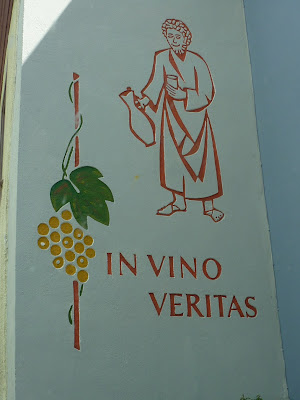From Eupen we were only a short distance to Aachen, a town I had always wanted to see but never quite got around to seeing. We got to Aachen by 9 Sunday morning and easily found a parking place on the street just 3 blocks from the main square and cathedral. But the cathedral was in service, so to speak, and not open to visitors until 12:30. So we strolled about (shops were open), bought some of the decadent local gingerbread cookies, and bided our time.
Why Aachen? you ask. Several reasons. Aachen (aka Aix-la-Chappelle) was Charlemagne's capital; the "father of Europe," he who battled the Moors in Spain and who conquered and unified much of Europe late in the 8th century. The Aachen cathedral is also the oldest around in this part of the world, dating from 800, and it is widely regarded as the beginning of truly
European art and architecture; the Carolingian Renaissance. Its central structure was Charlemagne's royal chapel, copied very closely on what he and his artistic advisors had seen at San Vitale in Ravenna. So we had to see it.
 |
But first, Aachen's Rathaus...
|
 |
The right tower of which is thought to have included (up to
13m), part of Charlemagne's great hall and throne room
|
 |
The cathedral itself, although relatively small, is difficult to
see and photograph
|
 |
The brass model helps; it's the central dome that is of chief
interest, being the oldest (although the rest is pretty old too);
the tower and choir are later add-ons; truly a hodge-podge, but
an understandable one
|
 |
In a 2009 excavation, two large wooden pegs were found in
the cathedral's foundations; dendrochronology showed them
to be from c. 781
|
 |
Inside the dome; very similar in lay-out to San Vitale; mosaic
and gold everywhere; but little of the mosaic is more than
geometric design...almost more Islamic than Christian; see our
posts from June 27, 2011, or search vitale
|
 |
Later Medieval windows near the altar
|
 |
Altar; lots of gold; Pantokrator and 4 evangelists
|
 |
Mosaic over the altar area; no Pantokrator!
|
 |
More mosaic designs; no Bible stories going on here; could
just as well be Islamic...
|
 |
This mosaic by the entrance was of great interest...Roman-
looking figures, all of them Roman river gods...Tigris,
Eurphrates, etc.
|
 |
Pulpit of Emperor Henry II; (looks gold but is
actually copper); 13th
|
 |
12th century chandelier, a gift of Frederick Barbarossa, whose
coronation occurred in Aachen, as did those of most of the
Holy Roman Emperors
|
 |
In the narthex, a She-wolf, 2nd century
|

























































